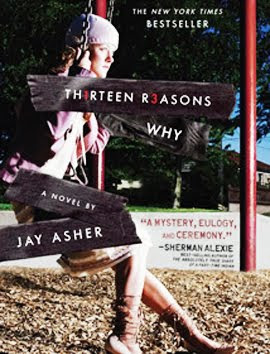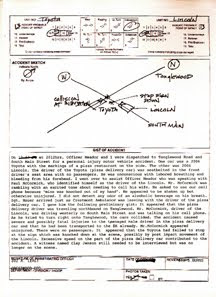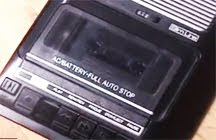 It has been some time since I thought much about the Vermont jamsters Dispatch, best known for moving mellow to sublime. (Not since Bang Bang, anyway).
It has been some time since I thought much about the Vermont jamsters Dispatch, best known for moving mellow to sublime. (Not since Bang Bang, anyway).
Back then, Brad Corrigan stood out as a clear lead vocalist, never really knowing that future lead singer and primary songwriter Chad Stokes Urmston would eventually front the Massachusetts-born alternative rock band State Radio in a few short years. So maybe it isn't any surprise from those already familiar with the unpredictability of Stokes that he would break away to produce something completely different as a solo debut.
The sound of the solo project is different; not the inspiration.
When some people first saw Simmerkane II, they set out to search for the debut only to discover Simmerkane II was a companion piece to State Radio's Simmer Kane EP (2004). The EP, however, wasn't especially well received so the band went on to produce other releases until the long-play breakthrough Let It Go.
But Chadwick (Chad) Stokes didn't let it all go. He began writing a set of songs inspired by his trek across America, hopping freight trains and crossing the country with his brother and cousin. It also might explain why State Radio hasn't produced much, releasing a few live compilations and a politically-volitle single.
“I had ridden the trains a little bit in the past for a day or two but I had never done it for weeks at a time,” Stokes says. “I discovered an America that I knew was out there but had limited experience with. There's all kinds of people out on the rails..."
As diverse as the people Stokes met along the way, Simmerkane II runs a bit hot and cold with a mix of Americana, country, folk, and rock that is a significant departure from State Radio. Still, what doesn't waver is Stokes' thoughtful and evocative lyrics. He is what he says. He's an artist who wants to explore more than market music.
Simmerkane II opens with more promise than it delivers.
As an odyssey, Simmerkane II opens with the three most powerful tracks on the album. Adelaide opens with a playable fuzz-ed folk rock. Crowbar Hotel captures the hard luck underground of America with its tight ramblings. And Back To The Races is a reflective composite of loss and regret, making anyone believe Stokes frequently re-imagines how life might have been.
After those three tracks, the album courts more variety that often works, but not nearly as much as the openers do. Insulin, for example, wavers between greatness and commonplace. Black Bottle and Ichabod And Abraham is are country-infused folk laments, with the latter deeper than the former. But others are feel like they're going through the motions or hit strong in the choruses but nowhere else.
Among the bonus tracks, Stokes fans like Coffee And Wine, but Don't Have You is the more emotive and moving of the three. All My Possessions weaves in some reggae stylings that State Radio fans are familiar with, but opens the door to second-guessing whether a different arrangement would have made it more powerful.
Simmerkane II By Chadwick Stokes Rails In At 4.2 On The Liquid Hip Richter Scale.
There's no question that Stokes is one of the most prolific DIY artists around. His contributions include the creation of Ruff Shod Records. He's also one of the most bullish in the music industry, noting that the industry might be a mess but not the musicians. He says there have never been so many great bands out there.
He's an artist. And while the entire Simmerkane II is best purchased by long-time fans (those who leave 5 stars on Amazon and iTunes), casual fans will find enough tracks worth rotation, especially those mentioned. Simmerkane II is available on iTunes. You can also order a CD or wait for the anticipated vinyl release. Download the album from Amazon.
![Liquid [Hip]](https://blogger.googleusercontent.com/img/b/R29vZ2xl/AVvXsEjAFBQPqS7J0-rrttNoRYSsuwIePPZf4Nq6sqDioK1zzVQXJIQXKzq_NVNI4n6h3inuRQFBKOcJeZeSufkdHHIOxbSWyBjTjTxgKEQGyPzdwvkEEeECh4bI5YEGk4RWGUINSd7vulPQsCA/s1600-r/liquidhip.jpg)





























